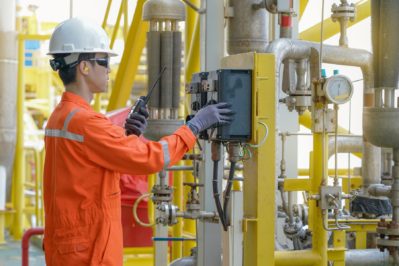When Do You Need Flame-Resistant Uniforms?
Providing flame-resistant work clothes for your employees who have contact with electrical equipment and charged components is not only a good internal policy, but it may also be required by federal safety guidelines under NFPA 70E standards. Understanding how flame-resistant uniforms work and when they are required will help you provide the best protection for your team while staying in compliance with industry guidelines and regulations.
Burn injuries and fatalities in the workplace often involve work uniforms that are not fire-resistant (FR). Regular clothing can ignite easily and continue to burn, contributing to the severity of burn injuries. How do flame-resistant work clothes reduce these effects?
How Does Flame-Resistant Clothing Work?

Flame-resistant work clothes are constructed of specialized materials to help:
- Prevent melting onto the skin
- Resist igniting
- Self-extinguish in most situations
- Reduce the severity of burns
- Improve chances of survival
Is FR Clothing Fireproof?
Flame-resistant clothing is not fireproof, and it is not intended to prevent all burns. In fact, requirements specify that FR uniforms be designed to reduce the second-degree burn area to under 50%. FR uniforms reduce the impact of an arc flash event or a flash fire, allowing employees more time to escape and improving survival rates if an accident does occur.
What Industries Should Provide Fire-Resistant Work Uniforms?
If your business exposes employees to these types of hazards, FR work clothing is likely to be required:
- Flash Fires. When vapors in the air ignite, fire spreads rapidly through the air, burning the dispersed fine particles of flammable chemicals, grain, or coal dust. Temperatures in a flash fire range from 1000 degrees F to 3500 degrees.
- Electric Arc Flash Events. Caused by electrical current discharging through the air due to an electrical issue, an arc flash is a type of explosion that reaches temps of 35,000 degrees.
Industries that commonly experience these hazards include:
- Petrochemical processing
- Metal smelting and casting
- Electricity production and distribution
- Manufacturing using highly charged equipment, or involving flammable vapors

What Are the Benefits of Fire-Resistant Uniforms?
There are other benefits to supplying work shirts, and fire-resistant coveralls that go beyond burns. Here are just a few good reasons to make FR clothing your standard of protection:
- Building and encouraging a culture of safety in the workplace
- Reducing injuries, compensation claims, and lost time due to accidents
- Making employees feel valued and protected while performing dangerous tasks
- Avoiding fines due to non-compliance with OSHA regulations
OSHA Guidelines for Fire-Resistant Clothing
Under OSHA 1910.132, employers must identify workplace hazards and provide affected employees with appropriate “personal protective equipment.” OSHA 1910.269 outlines requirements for workers in electrical power generation, transmission, and distribution, while 1910.335 requires employers to provide electrical protective equipment for all employees who may be exposed to potential electrical hazards.
Other state and national guidelines also govern various industries, and employers should research their legal requirements carefully.
Choosing the Right Employee Uniforms
Not every employee may need fire-resistant clothing. In high-temperature work environments, a moisture-wicking shirt may be all that’s needed. In areas with moving vehicles, enhanced visibility shirts provide protection from collisions. Your company’s assessment of potential hazards should guide your decisions about employee uniforms.
At Prudential Overall Supply, we have a wide range of choices in flame-resistant work clothes, including cotton flame-resistant gear and industry-specific options to keep your people safe and your company in compliance. Browse our options online and take the heat off your bottom line today.